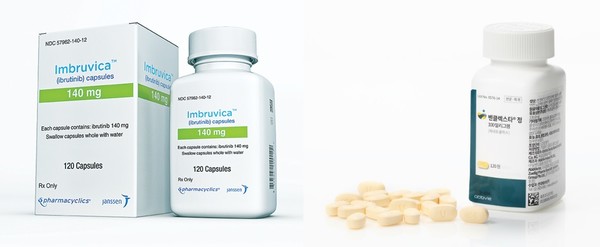As the government has gradually increased reimbursement for combination drugs treating chronic lymphocytic leukemia (CLL), patients’ hopes are growing for more diverse treatment options.
CLL is a blood cancer that occurs when lymphocytes, a type of white blood cell, grow and turn into cancer and interfere with the production of normal blood cells. The disease is rare and intractable as only about one to three per 100,000 people develop the disease a year in Korea. It is mainly found in people over 60 and is the most frequent leukemia found in adults in the West.

Chronic lymphocytic leukemia cells proliferate in the bone marrow, lymph nodes, and peripheral blood, and most patients are asymptomatic.
Due to the characteristics of the disease, CLL is diagnosed in more than half of asymptomatic patients. In some cases, health providers do not give treatments in the initial stage to keep track of patients and start chemotherapy when the symptoms appear.
Treatment begins when patients experience severe systemic symptoms, including anemia, hypothermia, lymphocyte reduction, spleen hypertrophy, increased lymphocytes by more than 50 percent, autoimmune blood cell reduction, persistent fatigue, fever, or weight loss.
The main therapy for CLL is chemotherapy, radiation therapy, bone marrow transplant. However, complete remission is difficult to be met despite having established standard therapies for the disease. In addition, the disease recurs in three years among some 50 percent of CLL patients, making the second-line treatment play a key role in long-term survival.
In addition to the existing chemotherapies, Bruton's tyrosine kinase (BTK) inhibitors, B-cell lymphoma 2 (BCL-2) inhibitors, antibody therapeutics, and combination therapy are used to treat the disease.
Recently, access to its treatment options using oral drugs alone or in combination with others has been enhanced in Korea, considering the characteristics of the disease with a high proportion of elderly patients.
Janssen's Imbruvica (ingredient: ibrutinib) is one of the BTK inhibitors widely used to treat CLL in Korea. It is the world's first oral BTK inhibitor that requires patients to take once a day.
Imbruvica changed the paradigm of CLL treatment by reducing the patient's burden of treatment and improving the quality of life with increased convenience and compliance of the drug.
The government approved the drug as a second-line and subsequent therapy and has offered reimbursement since April 2018.
When the company tried to expand the reimbursement to the first-line therapy, the Health Insurance Review and Assessment Service (HIRA) dismissed the request, saying the drug's clinical efficacy is unclear compared to the health insurance coverage to be used as a first-line treatment.
However, the company's recent primary results are a phase 3 GLOW clinical trial of Imbruvica and Abbvie's BCL-2 inhibitor Venclexta (ingredient: venetoclax) with a standard first-line treatment obinutuzumab and chlorambucil showed positive results, showing a glimpse of hope for domestic reimbursement as first-line therapy.
At a median follow-up of 27.7 months, the median progression-free survival (PFS) of the obinutuzumab and chlorambucil group was 21 months, while the median PFS was not reached for Imbruvica and Venclexta.
Abbvie's Venclexta also began receiving reimbursement as second-line therapy combined with rituximab, rising as an effective treatment option for CLL patients.
Compared to other drugs, after two full years of combination therapy of Venclexta, patients could benefit from years of stopping treatments without receiving chemotherapy. In addition, patients sustained progression-free survival (PFS) and overall survival (OS) benefit after taking two years of the combo therapy.
The median PFS was 17.0 months in the standard treatment group, whereas the Venclexta-rituximab group reached 53.6 months. In addition, the OS of those who received the standard treatment was 62.2 percent, while people in the Venclexta-rituximab treatment group showed 82.1 percent OS.
The improved study results are likely to positively affect the government's review for providing reimbursement when the companies try to expand as the first-line and subsequent treatments.

